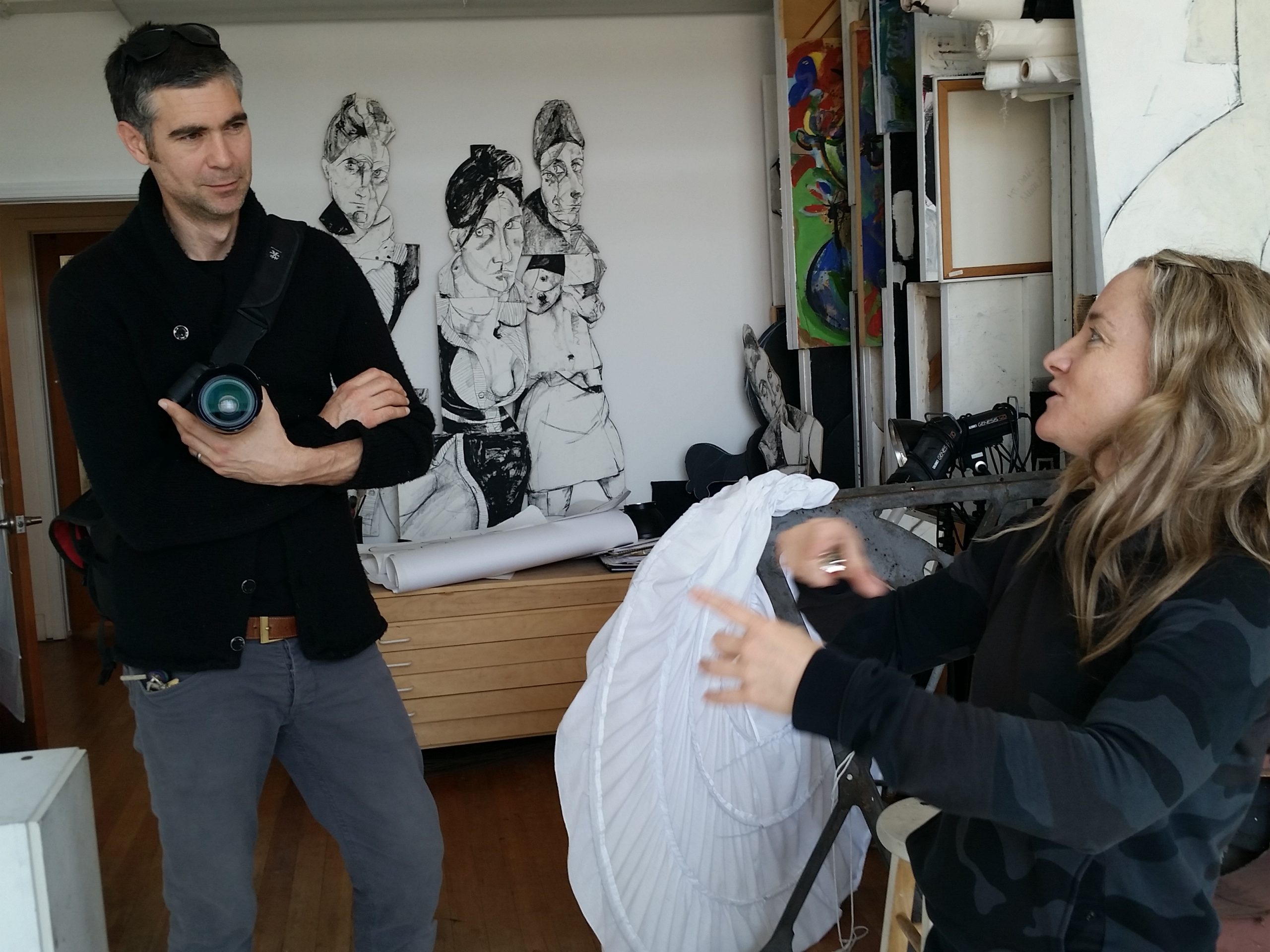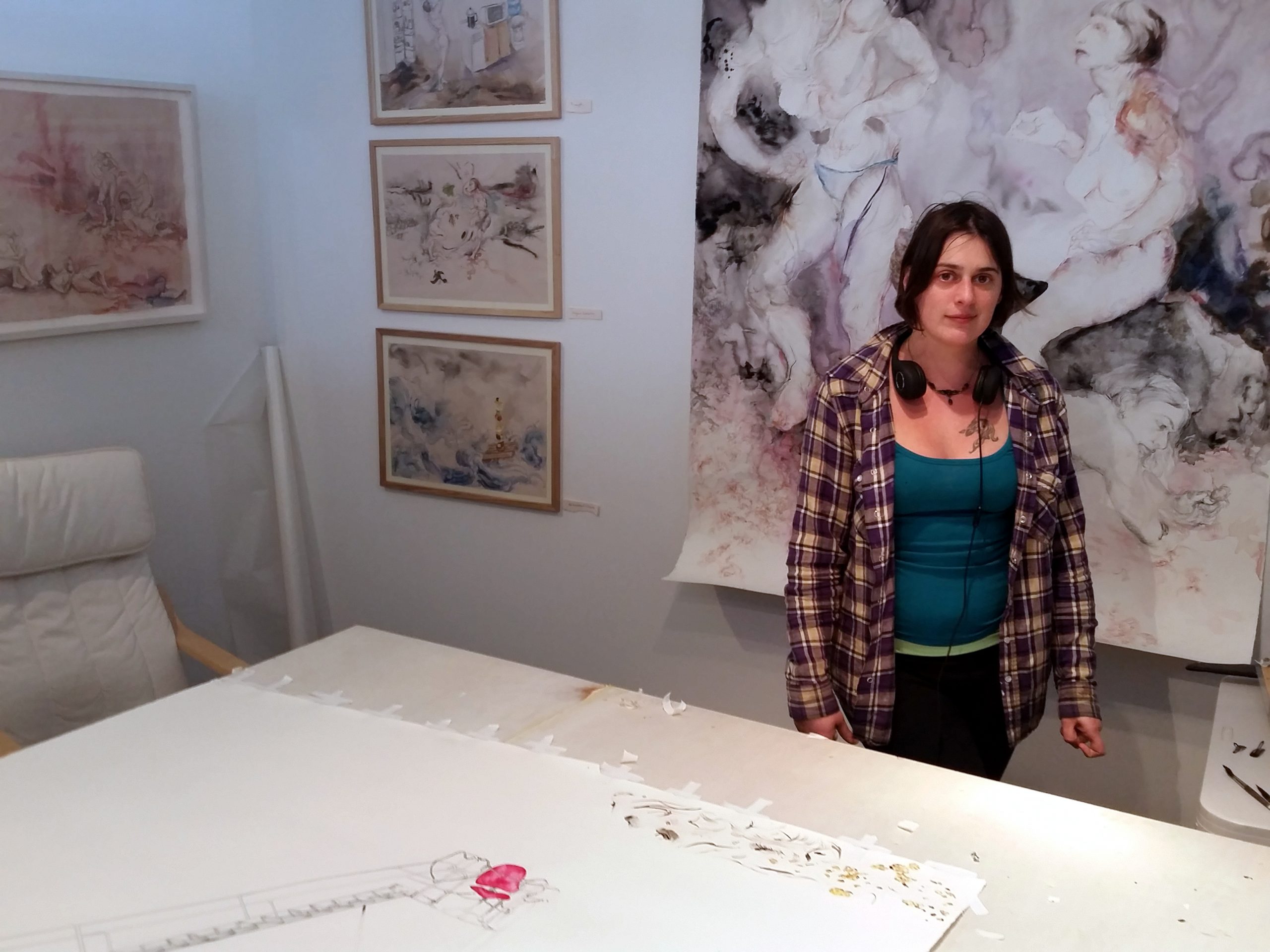San Francisco’s affordability crisis rears its head almost daily in narratives that typically feature the same basic characters: long-time residents losing their rent-controlled homes to unscrupulous or, occasionally, misunderstood building owners.
But soaring real estate values are threatening many other renters because city controls protect only residential tenants whose homes are in older buildings. Commercial tenants — nonprofits, small shops, and even artist collectives, as well as highly profitable businesses — often face drastic rent increases when their leases come up for renewal.
That includes the 70-plus artists who belong to Studio 17 in the Mission District’s Redlick Building at 17th and Mission streets, where Thrift Town occupies the first floor and the iconic “17 Reasons” sign used to grace the roof.
The decade-old Studio 17 is negotiating with building owner Rick Holman to keep its rent at a level that members can afford. But Robert Donald, a painter and photographer who is the group’s master lessee, is pessimistic. He said communication with Holman has broken down, and the group may have to leave for another neighborhood where rents are lower.
“To stay in this area is basically just delaying a similar scenario,” Donald said.
Donald signed the most recent lease for Studio 17’s 25,486 square feet in 2012. He pays $11.12 per square foot per year and sublets portions of the space to artists at varying rates, depending on each studio’s size, access to natural lighting and other attributes.
After buying the building in April 2013, Holman extended that two-year lease to June. At that point, Holman will be entitled to raise the rent as much as he likes, and new leases often come with rent hikes to reflect a property’s rising value.
Donald said Holman wants to triple Studio 17’s rent, and Truong Tran, an artist helping with the talks, said Holman isn’t answering questions about whether a seismic upgrade to the building, set for summer, will force Studio 17’s artists to vacate.
Holman said in an email to the Public Press that Donald’s and Tran’s accounts were “inaccurate” but declined to comment further.
“We continue to be committed to supporting the artist community in the Mission with below market rent rates,” Holman wrote.
The commercial real estate firm CBRE Group expects San Francisco to surpass Manhattan as the nation’s most expensive market for office space by the end of 2015, according to Bloomberg News.
In New York City, blogger Jeremiah Moss has chronicled the departure of local institutions over the last eight years and recently started a movement #SaveNYC to press politicians to increase protections for businesses and other commercial renters. A Small Business Jobs Survival Act was first proposed in 1986. Re-introduced in 2014, it has started gaining media coverage and support from displaced artists who describe it as a bulwark against rising rents.
If passed, the ordinance proposed in New York would set the minimum commercial lease term at ten years, unless both the landlord and the tenant agreed to a shorter term. Landlords would have to give tenants at least 180 days’ notice when they planned not to renew the lease, and they would have to justify that decision, with any disputes going to arbitration.
If San Francisco had such a law, in addition to supporting Studio 17, it might have enabled Jeffrey’s Toys to remain in the city, where it has operated since 1970. The Market Street store’s owners got only a few weeks’ notice that their lease would end this month and the rent would rise five-fold to $40,000, CBS San Francisco reported.
At Studio 17, a three-fold increase would bring the rent in line with what other Redlick Building tenants are paying, according to broker Touchstone Commercial Partners, which was leasing other space there for $30 to $33 per square foot as of Monday.
CBRE traces soaring demand for commercial space in San Francisco to the continuing influx of new tech companies. Indeed, one of the new tenants in the Redlick Building is the smartphone app maker PlanGrid, which occupies the former quarters of the nonprofit Homeless Children’s Network, whose staff did not respond to requests for comment on why they left.
Painter Lexie Bouwsma said she has begun peeking through listings for a new workspace. “I’m kind of afraid to.”
Bouwsma, who said she likes to “work big,” worries that she won’t be able to find another space that would fit her 6-by-8-foot work table. At $666 a month for 323 square feet, Bouwsma pays almost exactly the group’s average studio price.
Andrew Vogt, who creates wood sculptures, said competition for studios is intimidating. “We considered looking to Oakland, but what do you do? Places are getting snatched up.”
Photographer Alex Nichols is doing what comes naturally: capturing snapshots of Studio 17’s artists and their work in her new blog.
“I want to document that everyone was here,” Nichols said.










